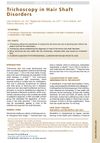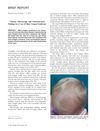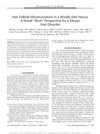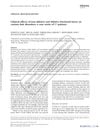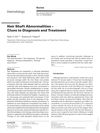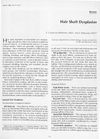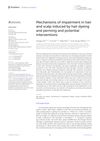Diagnostic Keys in Hair Dysplasias II
July 2021
in “
Actas dermo-sifiliográficas/Actas dermo-sifiliográficas
”
hair shaft disorders genetic mutations environmental factors trichoscopy topical minoxidil short anagen syndrome trichonodosis pili annulati woolly hair uncombable hair syndrome electron microscopy hematoxylin and eosin staining biotin supplements zinc pyrithione shampoos minoxidil biotin zinc pyrithione
TLDR Hair shaft disorders are diagnosed through examination and history, with general care and some treatments offering improvement.
This review covers hair shaft disorders with minimal or no hair fragility, caused by genetic mutations or environmental factors. Diagnosis involves medical history, hair examination, and trichoscopy. There are no specific treatments, but general care practices are recommended. Some disorders improve with puberty, and topical minoxidil may help. The review details conditions like short anagen syndrome, trichonodosis, pili annulati, woolly hair, and uncombable hair syndrome (UHS), describing their features, diagnostic methods, and genetic links. UHS diagnosis traditionally uses electron microscopy, but alternative methods like hematoxylin and eosin staining are explored. Treatments like biotin supplements and zinc pyrithione shampoos show some success. General care includes avoiding excessive brushing, chemicals, and heat. No specific funding or conflicts of interest were reported.

